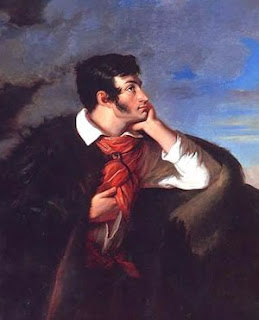Pushkin wrote The Bronze Horseman in part as a response to Mickiewicz's The Monument of Peter the Great. Mickiewicz had been jailed and forced into exile following the student uprising at the University of Vilnius in 1823. Mickiewicz had been protesting the oppression of Lithuania and Poland following the partitions first made by Peter the Great, and continued with his daughter Catherine, who had the bronze sculpture of her father on horseback erected in St. Petersburg. To Mickiewicz, Peter was an usurper, not a liberating force, and creates an imaginary conversation between Pushkin and himself which Marinus Wes describes in his book Between Two Horsemen.
Mickiewicz was more explicit in his text than Pushkin was in his response. Pushkin took the statue as having a dark side, in the way it came to life and chased down a bedraggled Yevgeny, who carried with him the scars of the 1824 flood. The only direct reference to Mickiewicz is a footnote,
Mickiewicz, in one of his best poems, Oleszkiewicz, has in most beautiful lines described the day preceding the Petersburg flood. It is only a pity that his description is inaccurate. There was no snow--the Neva was not covered with ice. Our description is more correct, although it has none of the brilliant colors of the Polish poet.
attached to the lines,
O'er darkened Petrograd there rolled
November's breath of autumn cold;
And Neva with her boisterous billow
Splashed on her shapely bounding-wall
And tossed in restless rise and fall
Like a sick man upon his pillow.
Mickiewicz and Pushkin were friends, even if Mickiewicz tended to view all Russians as enemies by this stage in his life, eventually emigrating to Paris where he hoped to revive a Polish-Lithuanian state in exile.
______________________________________
Portrait of Mickiewicz by Walenty Wańkowicz (1827-28), portrait of Puskin by Vasily Tropinin (1827).


Comments
Post a Comment